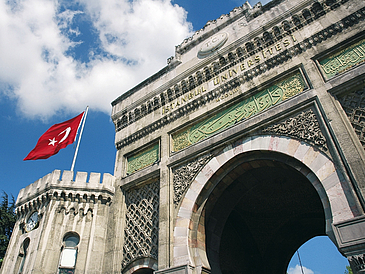Between 1933 and 1945 around 1,000 scholars, artists and politicians who were persecuted and expatriated in Nazi Germany were given refuge as stateless and displaced persons in Turkey. These refugees had the word “Haymatloz” written into their Turkish passports. The word has even been adopted as a loanword into the Turkish language. The travelling exhibition “HAYMATLOZ – Exile in Turkey 1933 – 1945” is a reminder of this mostly unknown episode in German-Turkish history.
Photos and documents trace the destinies of German-speaking exiles in Turkey. The exhibition was opened on 26th July in Haus der Wissenschaft by University President, Professor Wilfried Müller and Professor Gerold Wefer, Chairman of Haus der Wissenschaft. The travelling exhibition comes to Bremen as result of a cooperation project between the AKTIVE MUSEUM Faschismus und Widerstand in Berlin e.V. and the University of Bremen. It is part of the framework program in celebration of the University’s 40th anniversary and remains open until 30th August.
Following invitations from the Turkish Government, hundreds of German refugees travelled to the geographically strategic Bosphorus to make their contribution to the modernization of society, culture, and especially science. The HAYMATLOZ exhibition is not only a reminder of the refugees expelled from Germany by the Nazis: It simultaneously records the reform epoch in Turkey under the leadership of Atatürk.


